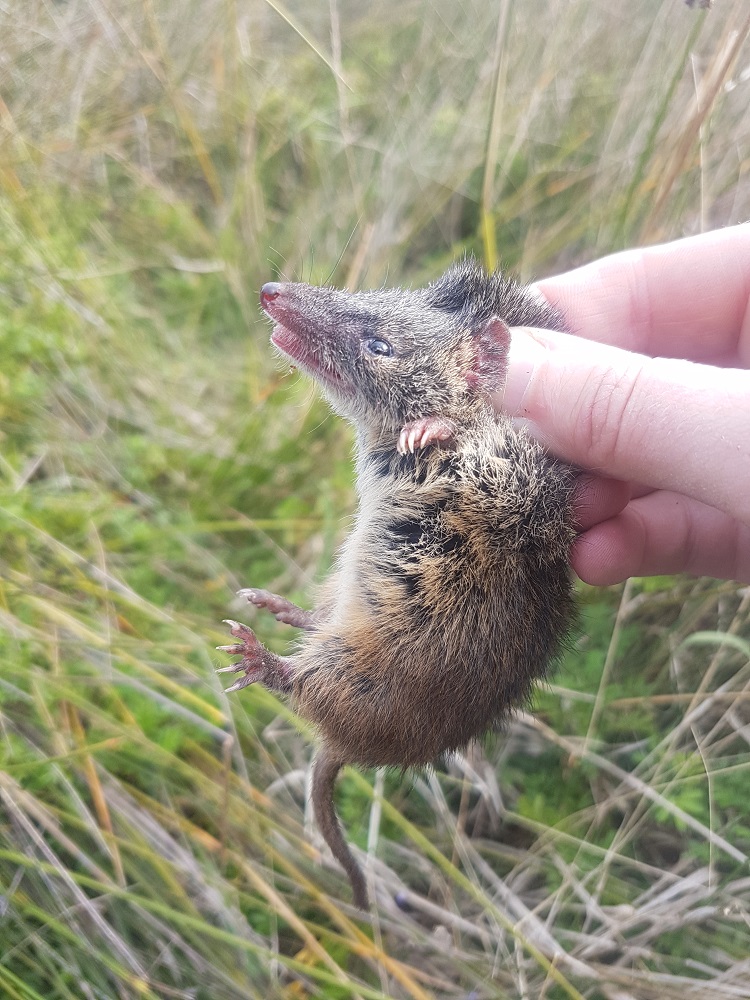Preliminary Swamp antechinus survey results ready to share
This autumn and early winter, thanks to the generous support of the Limestone Coast Landscape Board, we’ve been undertaking a targeted fauna survey in search of the endangered swamp antechinus (see May story here, and April story here). This small carnivorous marsupial is between the size of a mouse and a rat, and feeds on insects in the soil and leaf litter. There are four species of antechinus that occur in the general cross-border region between SA and Victoria, but this project is specifically investigating swamp antechinus habitat to freshly review their status in our area.
We surveyed more than a dozen areas, which included a small number of conservation reserves but were mostly sites situated on farms. On the farming properties, some habitat was grazed and some had been fenced to exclude livestock. Over five weeks, using between 100 and 130 traps per week, we ended up checking individual traps a total of 4390 times!
Each morning and afternoon I checked the traps, recorded any animals captured, replaced bait (we used peanut butter and oats to lure animals in), and reset the traps. Apart from our target species, the swamp antechinus, we also caught native bush rats and swamp rats, as well as introduced house mice and black rats.

I haven’t delved deeply into the data yet, but the table below shows the overall capture numbers in the current survey.
| Species (* indicates introduced species) | No. of captures in survey (/4390 traps checked) | Average no. per 100 traps checked | Percentage of sites where present |
| Swamp antechinus | 60 | 1.37 | 43.75 |
| Bush rat | 459 | 10.46 | 81.25 |
| Swamp rat | 138 | 3.14 | 87.50 |
| *Black rat | 5 | 0.11 | 18.75 |
| *House mouse | 688 | 15.67 | 100.00 |
We caught our target species 60 times (made up of 35 different individual animals, both male and female) and they were present at 44% of sites surveyed. Both species of native rat were present at over 80% of sites, while introduced house mice were captured at all sites. Introduced black rats, which generally prefer urban areas, were only captured five times.
This project is revisiting a subset of sites from a survey Mark carried out 20 years ago, so I grabbed his report to see how the capture rates compare. (Note that, while Mark’s early survey encompassed the entire SA range of the swamp antechinus, extending west to Robe, the current survey has focussed on the area between Carpenter Rocks and the SA/Victorian border).
| Species (* indicates introduced species) | Average no. per 100 traps checked in 2021 | Average no. per 100 traps checked in 1999-2001 |
| Swamp antechinus | 1.37 | 1.13 |
| Bush rat | 10.46 | 8.22 |
| Swamp rat | 3.14 | 3.38 |
| *Black rat | 0.11 | 0.14 |
| *House mouse | 15.67 | 7.53 |
As you can see, the capture rates are roughly similar for most species. The exception is of course house mice, which we caught at double the rate this time compared to 20 years ago. Although we are not seeing the plague proportions currently being experienced in grain growing regions elsewhere in the country, it is clear that mouse numbers are up here too. Nevertheless, I was pleased to see that even though mouse captures were up, capture rates of other species remained about the same; this indicates that we had sufficient traps in the field (i.e. with a smaller number of traps the danger is that they would all be filled with mice, leaving no open traps for our target species and other natives).
These very preliminary results indicate that the capture rate of swamp antechinus is similar to the earlier study; in fact, it’s slightly higher this time. This is a heartening overall result. I’m looking forward to analysing the data further to more directly compare this subset of sites to the earlier survey results to tease out a more complete story. So stay tuned for further updates!
This project is supported by the Limestone Coast Landscape Board.

